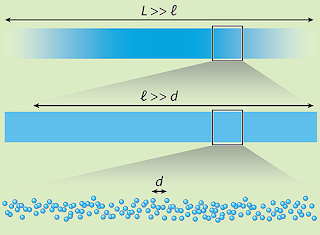Topics: Particle Physics, Quantum Mechanics, Theoretical Physics
Whether attempting to crack the mystery of high-temperature superconductors or describe a cloud of ultracold atoms, theorists face a similar question: What is the best way to model the behavior of many interacting quantum particles? Most models for such systems are extremely hard to solve analytically, or even simulate on a classical computer. In this context, models for one-dimensional (1D) systems are special because they have mathematical properties that often permit an exact mathematical solution. But even these solvable models aren’t ideal for describing real experiments, particularly those involving many out-of-thermal-equilibrium particles, like a cloud of atoms being released from a trap. A way to realize this description for a large class of widely used 1D models has now been reported in two independent papers, one by Olalla Castro-Alvaredo from the University of London, UK [1], and colleagues and the other by Bruno Bertini from the International School for Advanced Studies in Trieste, Italy, and colleagues [2].
A beautiful method of realizing quantum particles in a 1D setting is to confine ultracold atoms in an elongated (cigar-shaped) trap [3]. If the atoms are bosons, this system can be described by the 1D “delta Bose gas.” In this paradigmatic model, particles move solely along a line. They also mutually repel each other, but only when they are at exactly the same position, hence the “delta” in the model’s name. In the absence of an external trapping potential, this model is exactly solvable in the sense that the particles’ energy spectrum can be calculated [4].
APS Viewpoint: A More Efficient Way to Describe Interacting Quantum Particles in 1D
Jérôme Dubail, Institut Jean Lamour, CNRS and Université de Lorraine, Faculté des Sciences, Boulevard des Aiguillettes F-54506 Vandoeuvre-lès-Nancy, France
December 27, 2016• Physics 9, 153

Comments